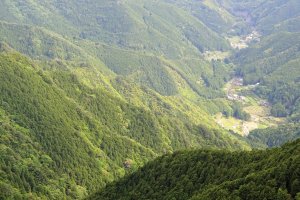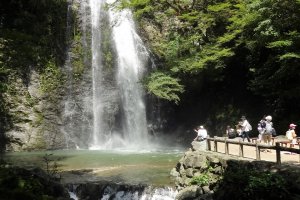The forest is Japan’s best kept secret!
One third all forest in Japan is National Forest while the remaining two third are privately owned by governments, communities, families and individuals.
Japan’s National Parks and so-called Recreational Forests are located in the National Forests of Japan. There are also many certified Forest Therapy bases and trails in these National Park but some are also located in forests owned by communities.
In this blog we are explaining the difference between these three types of forests.

National Parks
There are 34 National Parks in Japan, many of which cover forests and mountains, while some others consist of coastlines, beaches and underwater habitats.
The National Park Law was issued in 1931 and three years later the first three National Parks were established: Setonaikai (Seto Inland Sea), Unzen and Kirishima.
The Fuji-Hakone-Izu National Park, set up in 1936, is the most visited one in terms of number of visitors. Iconic Mount Fuji never fails to spell its magic.
The list has been extended over time, and most recently three new parks were added: Yakushima (Kagoshima Prefecture) in 2012, Keramashoto in 2014, Yambaru in 2016 and Amamikunto in 2017 (all three in Okinawa), and Myoko-Togakushi-Renzan (Niigata, Nagano Prefectures) in 2015.
National Parks offer a range of outdoor activities, including guided walks and treks, kayaking and fishing, cycling, hiking, scenic drives and camping, and more.

Forests for Recreation
The Japanese Forest Agency has created so-called “Recreational Forests” in those areas of the National Forest where there are breath-taking views and at the same time access is easily possible. The idea is to give everyone the opportunity to get in touch with nature and enjoy the great outdoors.
There are 94 Recreational forests; the possibilities for enjoyment and exploration in these Recreational Forests seem endless. There is flower viewing, cherry blossom viewing and autumn leaves viewing.
Then there is bird watching, wildlife spotting and fishing. You can visit waterfalls and try out canyoning in summer, go hiking, trekking and mountain climbing in spring and autumn, or go skiing in winter.
There are visitor centers, campgrounds and cabins, picnic areas and facilities for hands-on forest experiences. In some of them are astronomical observatories, forest railways and temples and shrines to visit.

Forest Therapy Bases and Trails
Japan is the birthplace of Shinrin-yoku, which translates as “forest bathing”. This phrase was coined in the 1980s and the idea that spending time in nature benefits our health and wellbeing was born.
Over the next 20 years this concept was researched and scientifically tested and proven. The phrase was changed from Shinrin-yoku to Shinrin Therapy, and later to Forest Therapy, which is now a recognized health management system in Japan.
In the words of the Forest Therapy Society of Japan, ‘Forest Therapy’ is “a research-based healing practice through immersion in forests with the aim of promoting mental and physical health and improving disease prevention while at the same time being able to enjoy and appreciate the forest”.
With the aim to set standards, a Forest Therapy certification was introduced in Japan in 2006. There are currently (Jan 2021) 65 “certified forests” in all parts of Japan ranging from Hokkaido to Okinawa. This means that each of these forests has a certified Forest Therapy base, trails and licensed Forest Therapy guides.
Forest Therapy is typically practiced with a trained Forest Therapy guide who facilitates the experience while at the same time ensures your health and safety. Bear in mind that a tour guide or a hiking guide is not usually trained in Forest Therapy, which is much more than just hanging out in nature.
In our next article, we explain Forest Therapy in more detail.



























